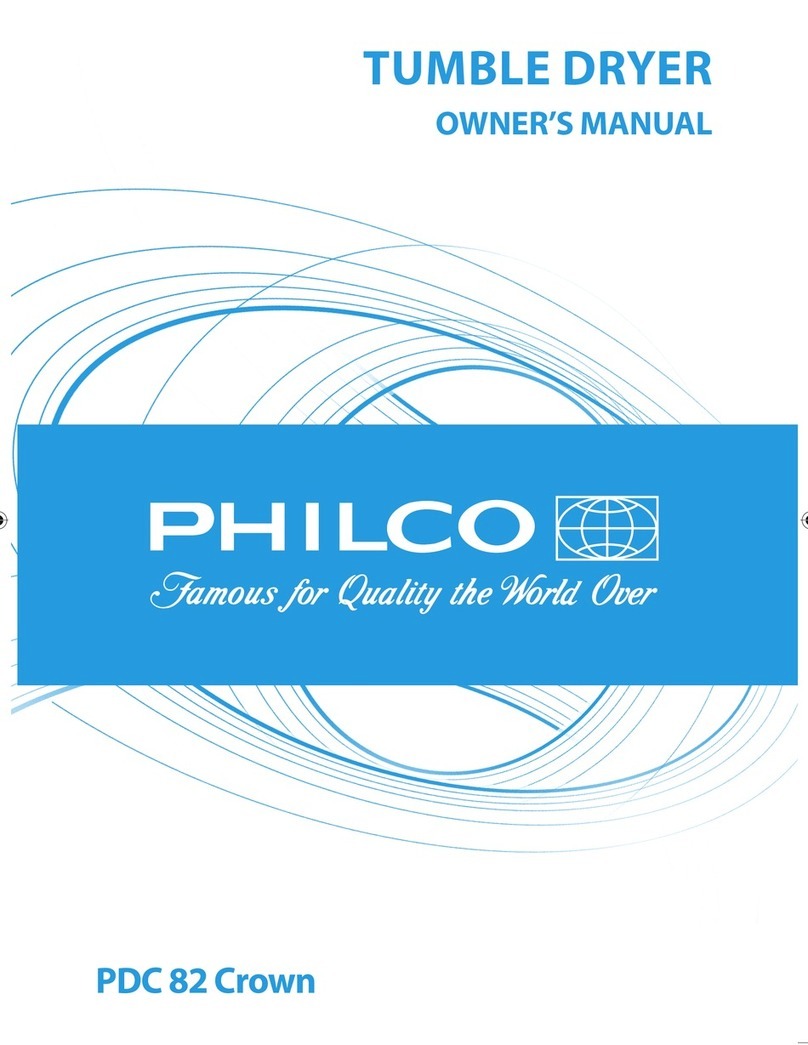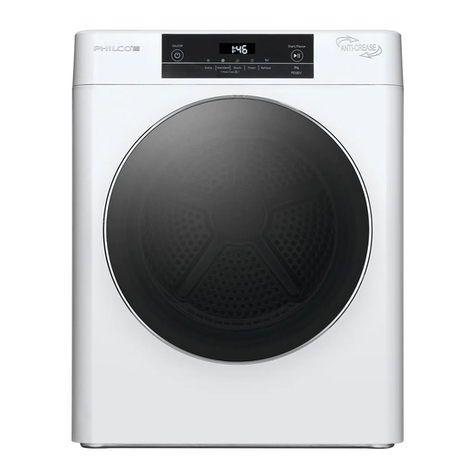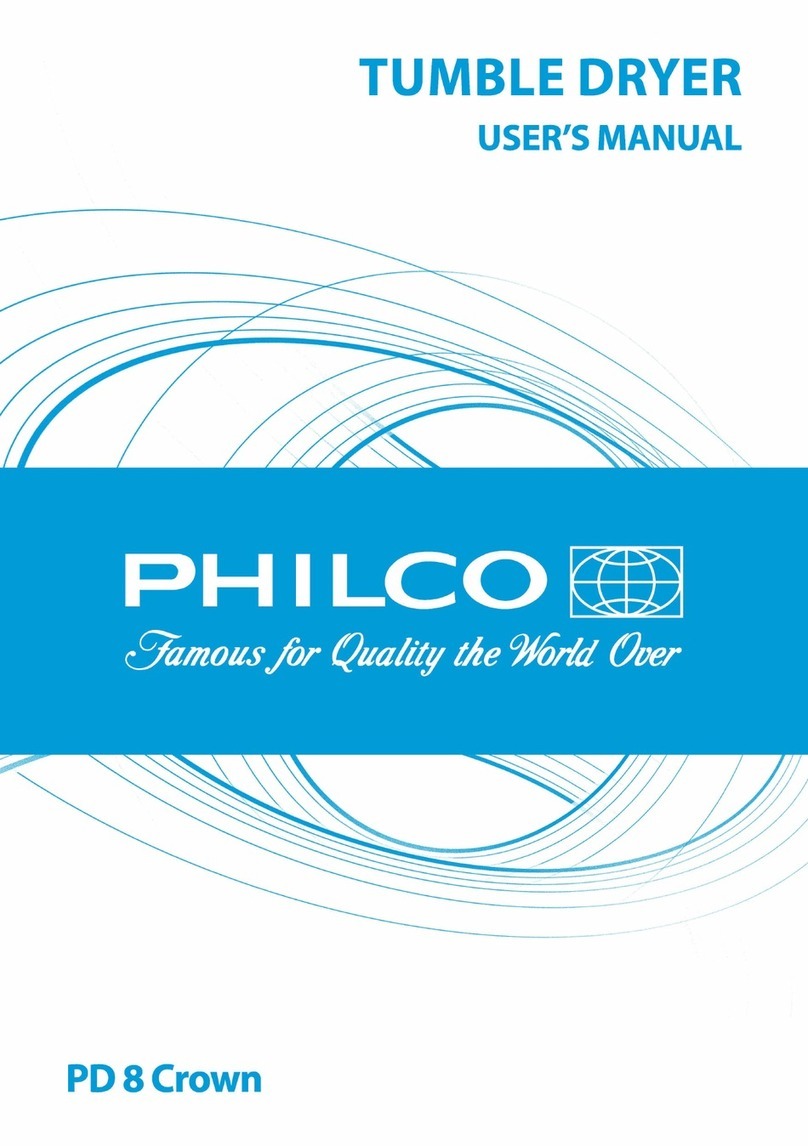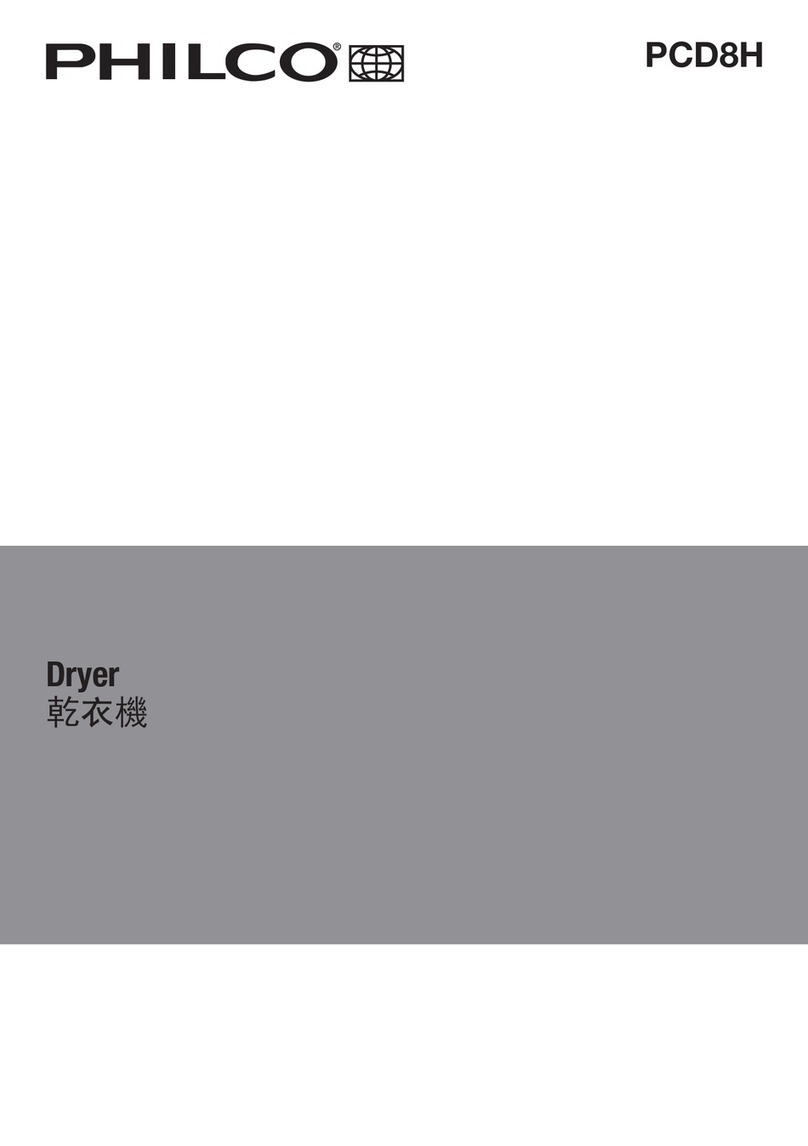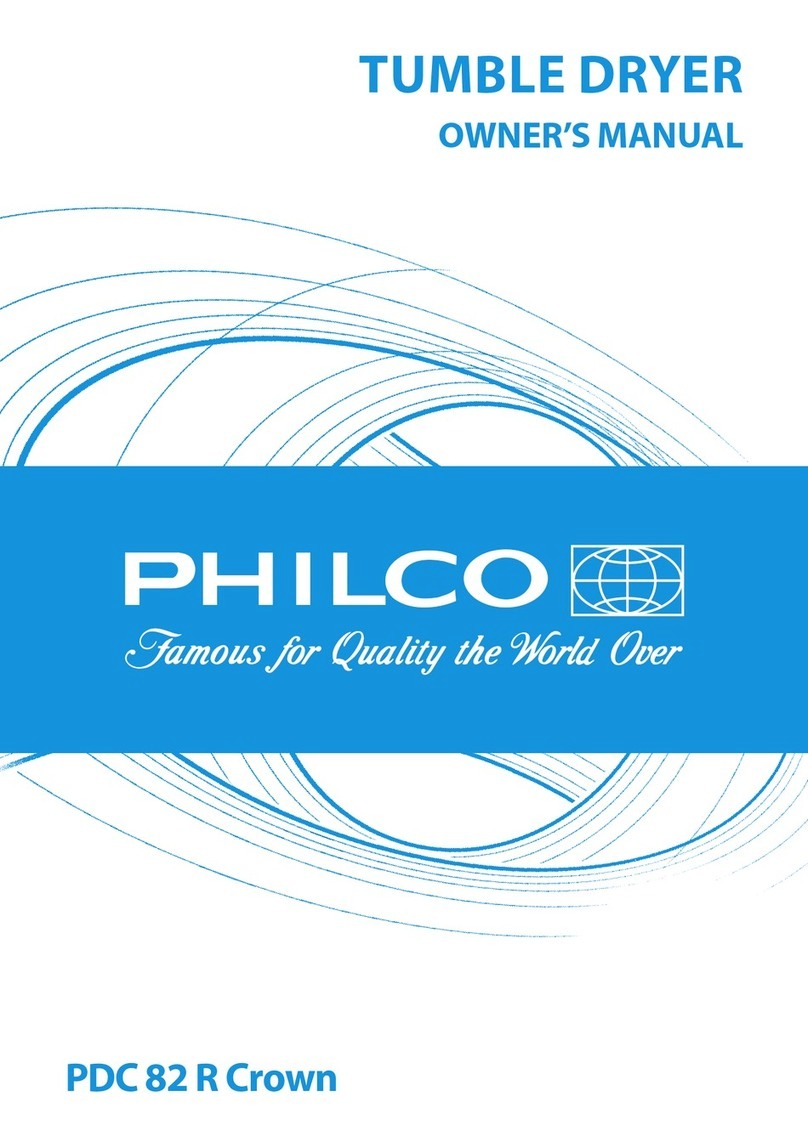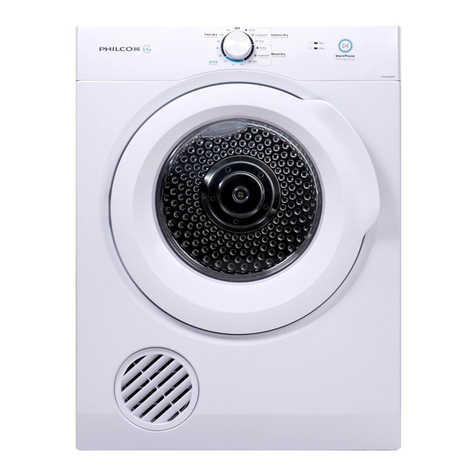
Contents
Important Safety Information
2
Important Safety Information
Dryer Safety
Fire Hazards
Cleaning the Lint Filter
Drying Guide
Installation Instructions
Quick 5 Step Operating Guide
Useful Hints
Useful Hints (continued)
Troubleshooting
Accessories
Warranty
Purchase Details
page2
page2
page3
page3
page4
page5
page5
page6
page6
page6
page7
page8
DRYER SAFETY
Failure to follow these safety instructions could damage the
dryer or your clothes.
You may then not be covered by warranty for this damage.
Only plug this appliance directly into an AC power supply,
which is properly earthed and has the correct voltage. See the
serial number sticker located on the top of the door opening for
voltage information.
CAUTION: If this appliance is supplied from a cord extension
set or electrical portable outlet device, the cord extension set or
electrical portable outlet device must be positioned so that it is
not subject to splashing or ingress of moisture. For safety rea-
sons we strongly advise against the use of double adaptors,
extension cords or power boards.
This tumble dryer is not intended for use by young children or
infirm persons without supervision. Young children should be
supervised to ensure that they do not play with the appliance.
IMPORTANT:If the electrical cord of this appliance is damaged,
it must be replaced by the Manufacturer, Authorised Service
Agent or similarly qualified person in order to avoid a hazard.
These dryers are for drying clothes, towels and linen at home.
Do not use them for any other purpose.
FIRE HAZARDS
Some fabrics are not suitable for tumble drying. The following
MUST NOT be placed in your dryer due to the risk of a fire or
an explosion:
Items that have been spotted or soaked with vegetable oil,
cooking oil, suntan oil, linseed oil, salad oil, lubrication oil
or grease. Oil affected items can ignite spontaneously, es-
pecially when exposed to heat sources such as in a tumble
dryer. The items become warm, causeing an oxidation
reaction in the oil. Oxidation creates heat. If heat cannot
escape, the items can become hot enough to ignite, Piling,
stacking, or storing oil-affected item can prevent heat from
escaping and create a fire hazard. If it is unavoidable that
fabrics that contain vegetable or cooking oil, or have been
contaminated by hair care products be placed in a tumble
dryer, they should first be washed in hot water with extra
detergent this will reduce, but not eliminate, the hazard.
The "cool down" cycle of tumble dryers should be used to
reduce the temperature of the items. They should not be
removed from the tumble dryer or piled while hot.
Items that have previously been cleaned in , washed in, or
spotted with petrol/gasoline, industrial chemicals used only
for cleaning, dry-cleaning solvents or other flammable or
explosive substances. Highly flammable substances com-
monly found around the house include acetone, (nail pol-
ish remover) denatured alcohol, petrol/gasoline, kerosene,
some spot removers, turpentine, waxes and wax removers.
Items containing foam rubber (also known as latex foam)
or similarly textured rubber-like materials. Foam rubber
materials can produce fire by spontaneous combustion
when heated.
Rubber-backed articles, clothes fitted with foam rubber
pads, pillows, rubber boots and rubber-coated sports shoes.
For your safety, and to reduce the risk of fire or an explosion,
DO NOT store or use petrol or other inflammable vapours and
liquids near your dryer.


